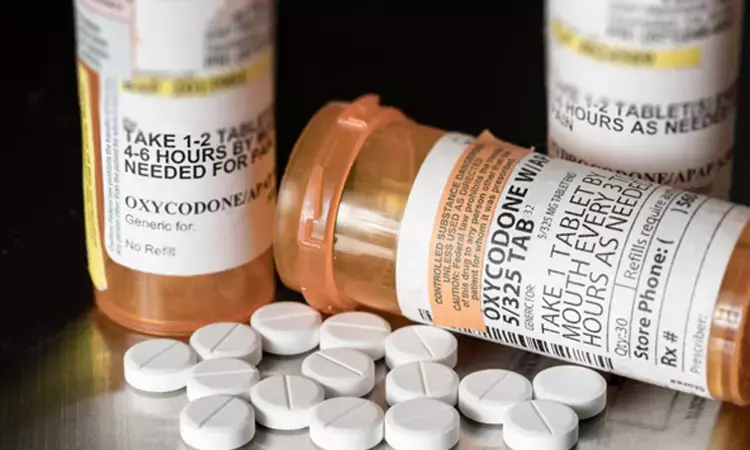- Home
- Medical news & Guidelines
- Anesthesiology
- Cardiology and CTVS
- Critical Care
- Dentistry
- Dermatology
- Diabetes and Endocrinology
- ENT
- Gastroenterology
- Medicine
- Nephrology
- Neurology
- Obstretics-Gynaecology
- Oncology
- Ophthalmology
- Orthopaedics
- Pediatrics-Neonatology
- Psychiatry
- Pulmonology
- Radiology
- Surgery
- Urology
- Laboratory Medicine
- Diet
- Nursing
- Paramedical
- Physiotherapy
- Health news
- Fact Check
- Bone Health Fact Check
- Brain Health Fact Check
- Cancer Related Fact Check
- Child Care Fact Check
- Dental and oral health fact check
- Diabetes and metabolic health fact check
- Diet and Nutrition Fact Check
- Eye and ENT Care Fact Check
- Fitness fact check
- Gut health fact check
- Heart health fact check
- Kidney health fact check
- Medical education fact check
- Men's health fact check
- Respiratory fact check
- Skin and hair care fact check
- Vaccine and Immunization fact check
- Women's health fact check
- AYUSH
- State News
- Andaman and Nicobar Islands
- Andhra Pradesh
- Arunachal Pradesh
- Assam
- Bihar
- Chandigarh
- Chattisgarh
- Dadra and Nagar Haveli
- Daman and Diu
- Delhi
- Goa
- Gujarat
- Haryana
- Himachal Pradesh
- Jammu & Kashmir
- Jharkhand
- Karnataka
- Kerala
- Ladakh
- Lakshadweep
- Madhya Pradesh
- Maharashtra
- Manipur
- Meghalaya
- Mizoram
- Nagaland
- Odisha
- Puducherry
- Punjab
- Rajasthan
- Sikkim
- Tamil Nadu
- Telangana
- Tripura
- Uttar Pradesh
- Uttrakhand
- West Bengal
- Medical Education
- Industry
Opioids prescribed in pregnancy increase risk of neonatal opioid withdrawal syndrome: JAMA

USA: A new study conducted by Daina B. Esposito and team found that opioids with lengthy half-lives and potent agonists in utero are associated with an increased incidence of severe neonatal opioid withdrawal syndrome (NOWS). The findings of this study were published in the Journal of the American Medical Association.
Even though they are linked to newborn opioid withdrawal syndrome, opioids are often taken during pregnancy. Despite the pharmacological and pharmacokinetic variability across opioid medicines, only the class-wide result has been evaluated in the majority of investigations investigating the negative effects of opioid usage for pain. This study compared the risk of NOWS among popular opioid drug classes when used as monotherapy in the final three months of pregnancy.
This cohort research examined administrative claims data from mothers and babies covered by Medicaid in 46 states and the District of Columbia between January 1, 2000, and December 31, 2014. Participants included eligible live-born neonates and moms who had two or more opioid prescriptions filled within 90 days after birth. From February 2020 to March 2021, data were examined. The agonist potency (strong vs. weak) and opioid active component half-life (medium vs. long vs. short) of several opioid drug kinds were compared.
The key highlights of this study were:
1. The cohort included 48 202 live births from pregnancies exposed to opioids.
2. 1069 newborns overall (2.2%) and 559 (1.2%) had severe NOWS. Contrary to 25 710 pregnancies exposed to hydrocodone, opioid exposure during pregnancy comprised 16 202 pregnancies exposed to codeine, 4540 to oxycodone, 1244 to tramadol, 260 to methadone (dispensed for pain), 90 to hydromorphone, and 63 to morphine.
3. The demographics of opioids varied, with tramadol, oxycodone, methadone, hydromorphone, and morphine being more frequently prescribed to mothers who were older (>35 years).
4. In comparison to hydrocodone, codeine had a lower adjusted RR of NOWS, whereas tramadol had a comparable adjusted RR and oxycodone, morphine, methadone, and hydromorphone had adjusted RRs that were two to three times higher.
5. Strong agonists were linked to a larger risk of NOWS than weak agonists, while opioids with long half-lives were linked to a higher risk compared to those with short half-lives.
6. Results from sensitivity and subgroup analysis were consistent.
Although every patient's needs for pain management are unique, knowing the risks of NOWS associated with particular opioids may assist prescribers in deciding which opioid to use to treat pain in the late stages of pregnancy.
Reference:
Esposito, D. B., Huybrechts, K. F., Werler, M. M., Straub, L., Hernández-Díaz, S., Mogun, H., & Bateman, B. T. (2022). Characteristics of Prescription Opioid Analgesics in Pregnancy and Risk of Neonatal Opioid Withdrawal Syndrome in Newborns. In JAMA Network Open (Vol. 5, Issue 8, p. e2228588). American Medical Association (AMA). https://doi.org/10.1001/jamanetworkopen.2022.28588
Neuroscience Masters graduate
Jacinthlyn Sylvia, a Neuroscience Master's graduate from Chennai has worked extensively in deciphering the neurobiology of cognition and motor control in aging. She also has spread-out exposure to Neurosurgery from her Bachelor’s. She is currently involved in active Neuro-Oncology research. She is an upcoming neuroscientist with a fiery passion for writing. Her news cover at Medical Dialogues feature recent discoveries and updates from the healthcare and biomedical research fields. She can be reached at editorial@medicaldialogues.in
Dr Kamal Kant Kohli-MBBS, DTCD- a chest specialist with more than 30 years of practice and a flair for writing clinical articles, Dr Kamal Kant Kohli joined Medical Dialogues as a Chief Editor of Medical News. Besides writing articles, as an editor, he proofreads and verifies all the medical content published on Medical Dialogues including those coming from journals, studies,medical conferences,guidelines etc. Email: drkohli@medicaldialogues.in. Contact no. 011-43720751


